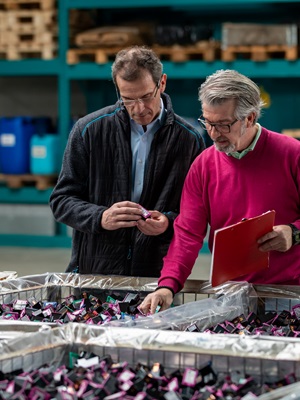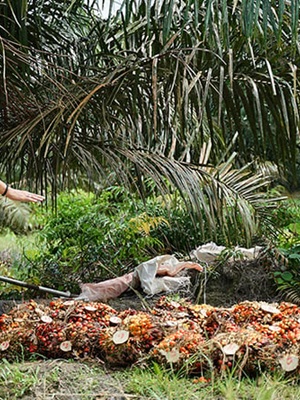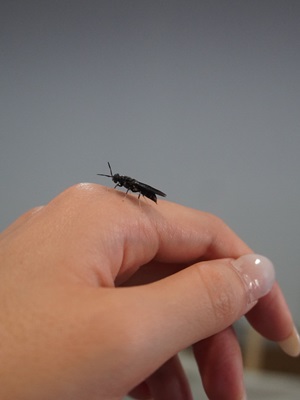According to the World Health Organization, in 2023, 29.6 percent of the world’s population was struggling with food insecurity. That works out to approximately 2.4 billion people, some 900 million of which are facing severe nutritional shortages. That’s a dramatic spike of roughly 122 million additional people going hungry than just a few years prior in 2019.
The problem extends far beyond drought-ravaged and war-torn regions. Food insecurity is a growing problem in affluent nations with robust agricultural systems. In Japan, an estimated 20 million citizens have a difficult time reaching their basic nutritional needs. In the United States, the number hovers around 17 million households. In many cases, the problem hides in plain sight, as families work to keep up appearances, while privately struggling to keep food on the table.
Yet most of these nations have no shortage of food. By current estimates, around 1.2 billion metric tonnes of food fit for human consumption winds up in the garbage each year.
As the world’s population continues to skyrocket, scientists are rushing to find sustainable, ethical solutions to the ever-growing problem. Now, some are wondering if artificial intelligence could hold the key.
A Problem of Catastrophic Scale
There are a number of culprits responsible for the staggering volume of food waste. Around 454 million metric tonnes never make it out of the fields, courtesy of poor harvesting methods and pest management, while another 318 million tons wasted due to storage issues.
Finally, 35 percent of food is simply thrown out by households and grocery stores—part of the price for the seemingly infinite bounty we see on perpetually stocked shelves. When put together, the amount of food that’s wasted accounts for 1.4 billion hectares of agricultural land, an area the size of India, Egypt, and the United States.
The cost of all that waste is dire, both for humans and for our warming planet at large. According to the United Nations, around a third of greenhouse gas emissions are a direct result of food production and transportation.
All that food waste takes a toll on the global water supply as well. Around a quarter of the world’s freshwater gets drained by food waste. Given that environmental groups are already warning of potentially catastrophic freshwater shortages, it is in our collective interest to reduce that figure.
How A.I. Could Help Find Solutions
While there is no single solution that will eliminate food waste, some are hopeful that A.I. could make real strides in reducing it. The Harvard Business Review claims that one of the primary obstacles that companies need to overcome boils down to simply keeping better track of and accurately reporting their environmental impact. A 2023 survey of food companies in the U.K. found that 79 percent had difficulty reporting their environmental performance along the supply chain.
Programs like the European Union’s Digital Product Passport have the potential to help consumers and corporations monitor a food product’s real journey from farm to table. With more data to work with, A.I. could help grocery stores and restaurants make better decisions about which products to carry and in what quantities.
Already in 2019, McKinsey concluded that implementing A.I. technologies in various steps of the farming and food supply chain could result in a USD 127 billion savings by the year 2030. Given how far large language models (LLMs) have evolved since then, one can only speculate that the savings would be even greater.
Ocado Group, a large U.K.-based grocer, has been using machine learning to reduce its food waste successfully for several years now. A highly efficient series of robots powered by an A.I. system effectively manage the company’s large distribution warehouse. Alex Harvey, chief of advanced technology at Ocado Group, told Tech Informed in an interview that, “Using AI and ML techniques we were able to spot characterizes far beyond what a human would be able to detect with the data.”
The results speak for themselves. By 2019, the program had been so successful that the company’s food waste had plummeted to one out of every 6,000 items. By 2023, Ocado reported that its food waste was down to 0.5 percent of total products—far below the industry standard of 3 to 5 percent.
Other grocery companies are getting in on the action. In 2022, Albertsons, a U.S.-based grocer, began using the A.I.-powered platform Afresh Technologies, which tracks consumer purchasing habits to determine what quantities of fresh produce grocery stores should stock. The company is optimistic that the program will help it reach its goal of reducing food waste by 50 percent by 2030, a number in-line with the U.N.’s target for the world.
Even the World Wildlife Fund (WWF) is helping out. Last year, the nonprofit joined forces with Pacific Coast Food Waste Commitment (PCFWC), Shelf Engine, and Afresh Technologies. The pilot program using A.I. to help grocery stores make smarter purchasing decisions cut food waste by 14.8 percent. The study concluded that if this program were applied throughout the U.S., it would save a whopping 13.3 million metric tonnes of carbon dioxide.
Other small startups are focusing on making a difference on an individual level. Although much of food waste occurs before groceries ever reach a consumer’s home fridge, individual households still throw out a shocking volume of usable food. Apps like ShareWaste and Olio allow consumers and restaurants to offload some of their unneeded perishables to people in the area.
As daunting of a problem as global food waste may appear to be, industry innovators are already tackling it head-on using new technological tools in their arsenals. A.I. alone will not provide the solution, but it can be used to streamline supply chains, trim waste at every step of the way, and help both businesses and consumers cut waste.
Posted 26/06/2024

















